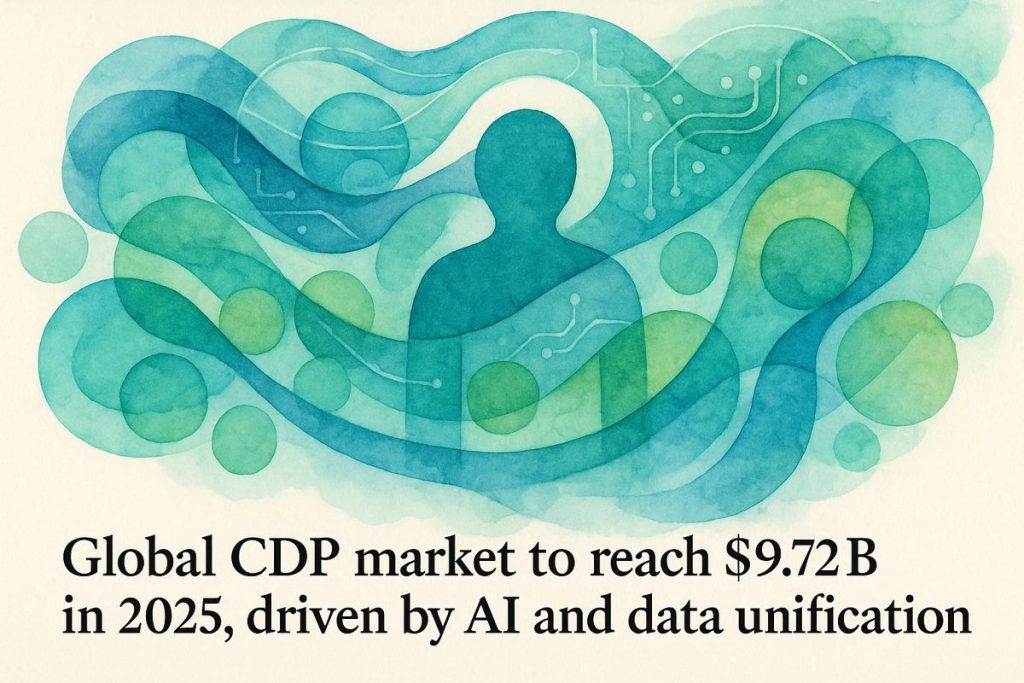In 2025, the customer data platform (CDP) market is booming, fueled by a rush to use safe, privacy-friendly ways to collect customer data. Tech giants like Salesforce and Adobe are buying up CDP companies, making the market feel like a crowded, buzzing train station. New rules and the loss of third-party cookies mean businesses must use creative new tools to gather and blend data directly from customers. In healthcare, CDPs are used to manage strict data rules and connect with professionals across many channels. AI and smart analytics are everywhere, but even with all this tech, many marketers still struggle to use CDPs fully, showing the market is still growing and changing fast.
What is driving the rapid growth and transformation of the customer data platform (CDP) market in 2025?
The CDP market in 2025 is expanding rapidly due to increased demand for privacy-focused, first-party and zero-party data solutions, major acquisitions by tech giants like Salesforce and Adobe, the rise of composable CDPs, AI-driven analytics, and complex regulatory requirements, particularly in sectors like life sciences.
A Billion-Dollar Patchwork Quilt
By 2025, the customer data platform (CDP) market feels like a bustling train station at rush hour: crowded, humming, and just a little bit unpredictable. Recent forecasts have the global CDP market vaulting from about $9.72 billion this year to a projected $37.11 billion by 2030—a CAGR north of 30%. I mean, those are numbers that make even the most caffeine-jaded analyst blink twice. Is this just another tech bubble, or a genuine tectonic shift? I found myself musing between sips of my third espresso.
But the plot isn’t being thickened by scrappy newcomers anymore. Instead, the drama unfolds through the acquisitive appetite of giants like Salesforce and Adobe (that old rivalry, alive and well), who are gobbling up CDP specialists like so many croissants at a Parisian breakfast. What used to be a field of quirky best-of-breeds is fast becoming stitched into the patchwork quilt of massive marketing clouds and CRM monoliths. I once tried to map the native CDP rollouts across platforms for a client—ended up with a palimpsest of sticky notes and an existential headache. True story.
And yet, for all this consolidation, the market’s flavor isn’t bland. The air practically tingles with the scent of innovation—think hyperspectral analytics, real-time orchestration, and a dash of zero-party data spice.
Composable Dreams and the Cookiepocalypse
If there’s a single zeitgeist defining 2025’s CDP conversation, it’s the slow, crunching demise of third-party cookies. Ad-blockers, GDPR, and Chrome’s long goodbye have forced marketers to pivot. Now, first-party and zero-party data—stuff customers hand over willingly (sometimes even cheerfully)—are in the spotlight. It’s as if every touchpoint must now become its own little Confessional Booth, with the CDP as High Priest, ensuring privacy, consent, and a sprinkle of regulatory absolution.
It’s not just about the data you have, but how you stitch it together. That’s where the idea of composable CDPs comes in—rather than swallowing a single, monolithic solution, enterprises mix and match best-of-breed modules like digital alchemists. Salesforce Data Cloud leads the charge here, while Tealium and Adobe keep nipping at its heels. (If you’re a glutton for benchmarks, check out Salesforce CDP vs Adobe Real-Time CDP and the AI-powered CDP comparison—prepare for a rabbit hole.)
Of course, this new flexibility invites new headaches. I remember a pharma client who wanted orchestration across 12 data sources—and got it, after three months, two compliance reviews, and one existential crisis. The complexity is real, folks.
Life Sciences: Data with a Pulse
Let’s not forget the life sciences and pharma crowd. Here, CDPs aren’t just about nudging you to buy more toothpaste. They’re a conduit for orchestrating omnichannel interactions with healthcare professionals (HCPs), blending digital signals and offline touchpoints like an intricate mosaic. Enterprises—think Pfizer, Roche, or AstraZeneca (illustrative, not exhaustive)—lean on Salesforce CDP and Adobe’s Real-Time CDP to unify clinical, sales, and engagement data. The stakes are high; HIPAA and GDPR compliance lurk like regulatory Cerberus at the gates.
I once had to sit through a five-hour consent management workshop—yes, five. The sound of compliance jargon still echoes in my dreams. But the upshot is real: the latest generation of CDPs can process consent across regions, surface audit trails with forensic precision, and activate compliant campaigns that actually work. For more stats, here’s a market forecast that’ll make your head spin.
The AI Metamorphosis and a Dash of Doubt
Now, no treatise on 2025’s CDP ecosystem would be complete without an ode to artificial intelligence. Predictive analytics, identity resolution, and hyper-personalized engagement are the new gold standard. Salesforce, in particular, gets top marks in Gartner’s 2025 Magic Quadrant, while Tealium scores high on orchestration and composability. Adobe, meanwhile, is deemed a “Visionary”—which sounds nice, but I can’t help but wonder if it’s just the polite way of saying “almost there, but not quite.”
Still, despite all the shiny dashboards, less than 25% of marketers report high utilization of their CDP’s capabilities. I’ll admit, I’ve been guilty myself—spending hours configuring segments, only to realize I’d overlooked a simple field mapping. Ugh. But with peer review ratings—Salesforce Data Cloud at 4.4, Adobe at 4.2—customer satisfaction remains robust.
Does this mean the CDP is a solved problem? Hardly. The market’s still a palimpsest, overwritten by every new regulation, every acquisition, every marketer’s fever dream. But isn’t that half the fun?
For deeper dives, check out: Adobe CDP Market Share, Salesforce Customer 360 vs Adobe CDP, and that AI-Powered CDP Tools Comparison. But fair warning: you might emerge with more questions than answers. Like I did…
